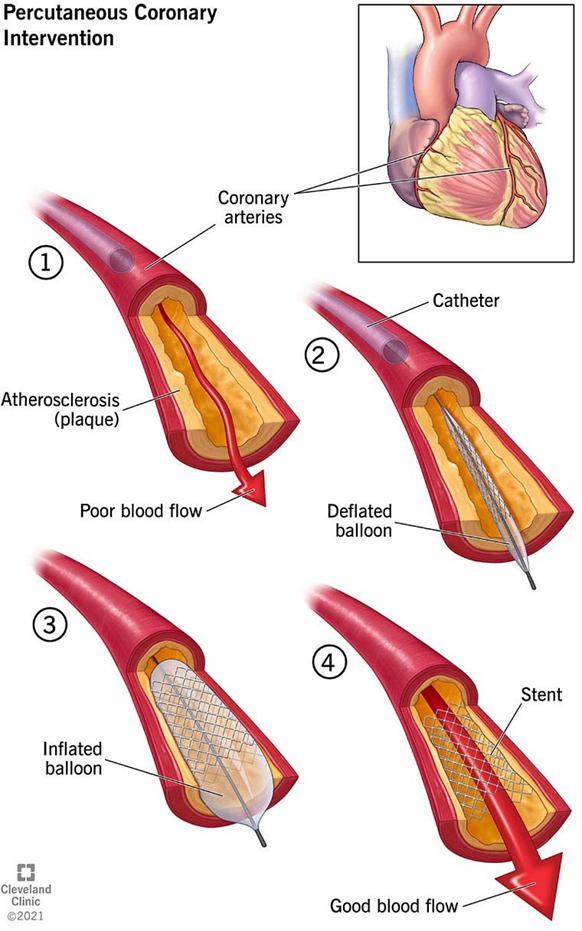A nurse performs Homans maneuver by flexing the knee and sharply dorsiflexing the foot. What response indicates a positive Homans sign?
Cramping of the toes
Blanching of the sole
Resisting dorsiflexion
Pain in the calf area .
The Correct Answer is D
Choice A rationale
Cramping of the toes is not typically associated with a positive Homans sign. Homans sign is a test used to check for deep vein thrombosis (DVT), a blood clot in a deep vein of the leg. While cramping can occur with DVT, it is not specific to this condition and can occur with many other conditions.
Choice B rationale
Blanching of the sole is not associated with a positive Homans sign. Blanching, or whitening of the skin, can occur with various conditions, but it is not a typical sign of DVT45.
Choice C rationale
Resisting dorsiflexion is not a typical response indicating a positive Homans sign. While pain or resistance during dorsiflexion of the foot can occur with various conditions, it is not a specific sign of DVT45.
Choice D rationale
Pain in the calf area during dorsiflexion of the foot (Homans sign) can indicate a positive sign for DVT. However, it’s important to note that Homans sign is not a reliable or definitive test for DVT. Other diagnostic tests, such as ultrasound, are needed to confirm the diagnosis.
Nursing Test Bank
Naxlex Comprehensive Predictor Exams
Related Questions
Correct Answer is C
Explanation
Choice A rationale
Administering Ibuprofen as scheduled is a proper nursing intervention for a patient with pericarditis. Ibuprofen is a nonsteroidal anti-inflammatory drug (NSAID) that can help reduce inflammation and relieve pain.
Choice B rationale
Monitoring the patient for complications of cardiac tamponade is a proper nursing intervention for a patient with pericarditis. Cardiac tamponade is a serious condition that can occur as a complication of pericarditis.
Choice C rationale
Placing the patient in a supine position to relieve pain is not a proper nursing intervention for a patient with pericarditis. This position could actually increase the patient’s discomfort.
Instead, the patient should be positioned upright and leaning forward to help relieve pain.
Choice D rationale
Monitoring the patient for pulsus paradoxus and muffled heart sounds is a proper nursing intervention for a patient with pericarditis. These are potential signs of worsening pericarditis or complications such as cardiac tamponade.
Correct Answer is D
Explanation
Choice A rationale
Exercise electrocardiography, also known as a stress test, is not typically the first-line emergent procedure for a patient with an acute myocardial infarction (AMI). This test is often used to diagnose coronary artery disease, but it is not typically used to treat an AMI5.
Choice B rationale
A computed tomography (CT) scan of the chest with contrast could be used to visualize the heart and surrounding structures, but it is not typically the first-line emergent procedure for a patient with an AMI5.
Choice C rationale
An echocardiogram could be used to visualize the heart’s structure and function, but it is not typically the first-line emergent procedure for a patient with an AMI5.
Choice D rationale
Percutaneous coronary intervention (PCI) is the correct answer. This procedure is often used as an emergent treatment for an AMI. It involves using a catheter to place a small structure called a stent to open up blood vessels in the heart that have been narrowed by plaque buildup.

Whether you are a student looking to ace your exams or a practicing nurse seeking to enhance your expertise , our nursing education contents will empower you with the confidence and competence to make a difference in the lives of patients and become a respected leader in the healthcare field.
Visit Naxlex, invest in your future and unlock endless possibilities with our unparalleled nursing education contents today
Report Wrong Answer on the Current Question
Do you disagree with the answer? If yes, what is your expected answer? Explain.
Kindly be descriptive with the issue you are facing.
